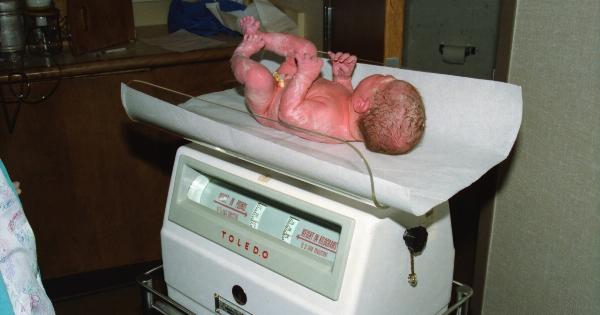Every baby is unique, and so is their development. The first few years of a child’s life are crucial, and parents need to keep a vigilant eye on their baby’s growth.
Among the many things that parents need to keep an eye out for is their baby’s belly. A baby’s belly is not the same as that of an adult, and there are many things that parents need to know about it. In this article, we will discuss everything you need to know about your baby’s belly.
What is a Baby Belly?
Babies have a very different digestive system than adults. While adults have fully developed digestive systems, babies are still in the process of developing theirs.
A baby’s belly is defined as the area between the chest and the pelvis that houses the digestive system. Unlike adults, a baby’s belly is round and protruding. This is because of the presence of undeveloped organs in the area. The organs in a baby’s belly are still developing, and they require special attention and care.
When to Intervene
Keeping a close eye on your baby’s belly is important to ensure that your baby is healthy and developing properly.
While a round and protruding belly is normal for babies under the age of three, there are certain signs that parents should look out for that may indicate a problem.
1. Changes to Stool
Babies’ stools change depending on whether they are breastfed or formula-fed. Formula-fed babies tend to have firmer stools, while breastfed babies have softer and lighter stools.
However, if there are any sudden changes to your baby’s stool color or consistency, it could be a sign of an underlying problem. For example, if the stool is hard and dark green, it can be an indication of constipation.
2. Bloating or Discomfort
If your baby is experiencing bloating, it could mean that there is an issue with their digestive system. Bloating is common in babies who are allergic to certain foods, and it can also be a sign of lactose intolerance.
It’s important to talk to your pediatrician if you notice any of these symptoms.
3. Vomiting
Vomiting is a common occurrence in babies, but if it is persistent and accompanied by other symptoms, it could be a sign of a more serious issue. For example, if your baby is vomiting frequently and has diarrhea, it could be a sign of a stomach virus.
4. Constant Crying
Babies cry for many reasons, but if you notice that your baby is crying more than usual, it could be a sign of an issue with their digestive system. For example, if your baby is suffering from acid reflux, they may be crying because they are in pain.
How to Intervene
If you notice any of the above symptoms, it’s important to take action and intervene. Here are some ways you can help your baby:.
1. Change Their Diet
If your baby is experiencing digestive issues, it may be time to change their diet. For example, if your baby is allergic to dairy, you may need to switch to a different type of formula.
If your baby is experiencing constipation, you may need to introduce more fiber into their diet.
2. Burp Your Baby
Burping your baby after they eat can help to reduce the amount of air that they have in their stomach. This can help to reduce the risk of bloating and discomfort.
3. Hold Your Baby in an Upright Position
After your baby eats, it’s important to hold them in an upright position. This can help to reduce the risk of acid reflux and spitting up.
4. Massage Your Baby’s Belly
Gently massaging your baby’s belly can help to relieve any discomfort that they may be experiencing. Use gentle circular motions with your fingertips.
The Bottom Line
A baby’s belly is an important area that requires extra attention and care. Parents need to know when to intervene and how to help their baby if they are experiencing digestive issues.
By keeping a watchful eye and taking the appropriate steps, parents can help their baby stay healthy and happy.



























